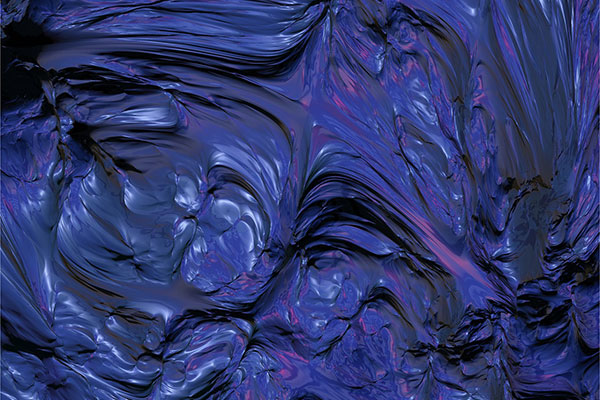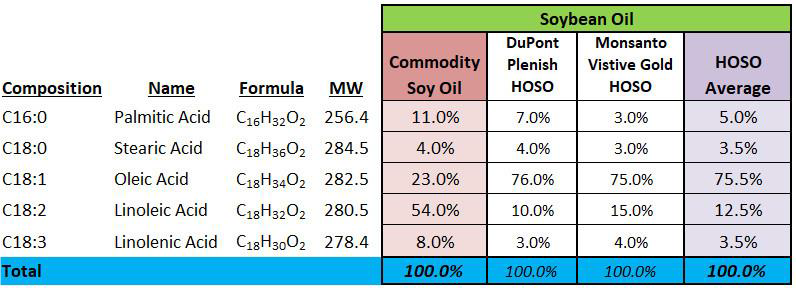 When I hear the word “compatible”, I think generally in terms in which two or more things are able to co-exist or work together in combination without problems or conflict. Ideally, synergistically. This can apply to interpersonal interaction between people, legacy computing systems, and to many other pairs or groups of objects.
When I hear the word “compatible”, I think generally in terms in which two or more things are able to co-exist or work together in combination without problems or conflict. Ideally, synergistically. This can apply to interpersonal interaction between people, legacy computing systems, and to many other pairs or groups of objects.
This article focuses on compatibility as it relates to various aspects of coatings. Specifically, it references back to several previous articles associated with overall formulation[1]; components such as surfactants[2], rheology modifiers[3], dispersants[4], wetting agents[5] and many others. There are too many scenarios to cover; therefore the examples cited should serve as food for thought when formulating or in seeking a solution to a problem.
The term “Coatings” includes Paints, Inks, Adhesives and Construction products. In each market, there are different types of compatibility challenges. Some are similar, but aren’t necessarily immediately apparent, or perhaps don’t result in a catastrophic event. An important aspect of a formulation chemist/engineer is to understand the interactions of the components in a formulation, as well as the finished product in its environment of use.
Adhesives
Although seemingly innocuous, the incorrect choice of defoamer can cause multiple compatibility issues in adhesives. In a waterborne system, “seeding” may occur, due to chemical interaction, or may be caused by shear due to agitation in mixing ingredients or during application in an OEM setting. It can also create localized dewetting which would present as fisheyes in a paint film. This leads to reduced adhesion and potentially failure.
In a 2-K adhesive, it is of course important to keep the components separate until right before its use. In addition, several classes of adhesives can prematurely cure if exposed to moisture (silicones), heat, light (UV cure) and oxygen during storage. With all of the coatings, the environment in which they are used is also a compatibility concern. Various resins are appropriate for different environments. As an example, an epoxy should not be used if it was to be exposed to 100% sodium hypochlorite.
Inks
Similar to adhesives, carefully consider additives and their compatibility with both the resin system as well as the shear created during processing and application. In addition, the resin itself has to be evaluated under shear consistent with the above.
The use of biobased materials in inks, especially soy, has been practiced for many years. Recently, there has been a greater emphasis on high oleic oils, particularly soybean oil (SBO). The formulator has to be aware of the difference in acid proportionalities not only between commodity SBO and high oleic soybean oil (HOSO) but also between suppliers. This is yet another compatibility consideration; the variability in “identical” products from different suppliers.

Paints
In addition to the previous considerations of raw material variability, environment of use, chemical reactions, process and application shear and storage stability, there are many other issues. As one example, in extender pigments[6], the mean particle size (PS) and the distribution of size can be critical to delivering the desired performance. Misinterpretation of the PS can effect adhesion, gloss uniformity and hatbanding. Benjamin Moore explains several causes in their article[7], or rolling using a longer nap roller and a lack of foam for the brushed edges could also form microfoam. The microfoam provides a slightly more flat surface and the voids of the foam cause the appearance of a darker color.

An odd example of compatibility occurs with the use of a very low-pH resin (such as several of the Solvay Diofan® polyvinylidene chloride (PVDC) resins or DSM’s Haloflex™). The resins themselves are in the 1-3pH range, and therefore would not be compatible with basic pigments such as calcium carbonate.
In addition, many additives do not perform well in an exceedingly acidic environment. It is always best to think through what you want to formulate and how all the components integrate and consider if they all play well together. Raw material suppliers often go to great lengths to offer extensive information in the Data Sheets and Starting Point Formulations[8,9], to minimize the work formulators undertake in the development of new products.
Paints are more likely to consist of a system than other coatings. System in this case means a process to provide the maximum benefit. In an industrial marine setting, this could mean a cleaning and passivation step, an epoxy prime, a traditional urethane tie layer and a fluorourethane topcoat.
An epoxy can’t be used as a topcoat, since sunlight (UV) will degrade the coating, but an epoxy is tolerant to corrosion inhibitive pigments, which often times reduce gloss. Therefore, the compatibilities here consist of a synergy between the epoxy primer and urethane topcoat. Aesthetically, the topcoat can provide an attractive glossy finish and protect the epoxy from UV.
Another word of caution here – in developing a new paint in the system, it isn’t enough to evaluate the coating for its own performance. It has to be evaluated for its performance in the system. A change in a material may cause an incompatibility between paint coats which could lead to early failure.
Construction products
There are many subsegments of this market, as well as interpretations of what qualifies. Siliconate water repellants, anti-graffiti coatings, cement and concrete additives are all examples. The siliconate surface treatments are sometimes considered coatings, however, they chemically react with the cement portion of concrete to create an barrier layer. Considerations to reduce incompatibilities include ensuring a full cure of the concrete and a rinse to remove excess surface ions that can interfere with adhesion and subsequent coating.
In summary, various circumstances impact compatibility/incompatibility. These examples don’t illustrate every possible incompatibility, but should cause the reader to think through all of the various steps and stages where a problem could occur. As offered, these include surface, formulation, processing, application and service use, among others.
Further reading:
- Overcoming Paint Film Defects: Causes and Remedies
- Coating Film Defects
- Formulating Waterborne Coatings
References
- Prospector Knowledge Center: Paint by Numbers: Three Approaches to Formulating Paints
- Prospector Knowledge Center: Surface Active Agents (Surfactants)
- Prospector Knowledge Center: Rheology of Waterborne Paints
- Prospector Knowledge Center: Understanding Dispersants
- Prospector Knowledge Center: Wetting Agents and Dispersants – What’s the Difference? [INFOGRAPHIC]
- Prospector Knowledge Center: Inert Pigments – The Unseen Contributor to Improving Paint Performance
- Benjamin Moore: Interior Painting Problems: Picture Framing or Hatbanding on Drywall
- UL Prospector: Coatings
- Prospector Knowledge Center: A Home for Architectural Coatings Resources
The views, opinions and technical analyses presented here are those of the author or advertiser, and are not necessarily those of ULProspector.com or UL Solutions. The appearance of this content in the UL Prospector Knowledge Center does not constitute an endorsement by UL Solutions or its affiliates.
All content is subject to copyright and may not be reproduced without prior authorization from UL Solutions or the content author.
The content has been made available for informational and educational purposes only. While the editors of this site may verify the accuracy of its content from time to time, we assume no responsibility for errors made by the author, editorial staff or any other contributor.
UL Solutions does not make any representations or warranties with respect to the accuracy, applicability, fitness or completeness of the content. UL Solutions does not warrant the performance, effectiveness or applicability of sites listed or linked to in any content.



What an amazing article is really very informative and I really appreciate reading your article.
I’m just seeing your comment for the first time. Thank you very much for the kind words. That’s really why I write; to educate people and give back some of what I learned in my 40+ years